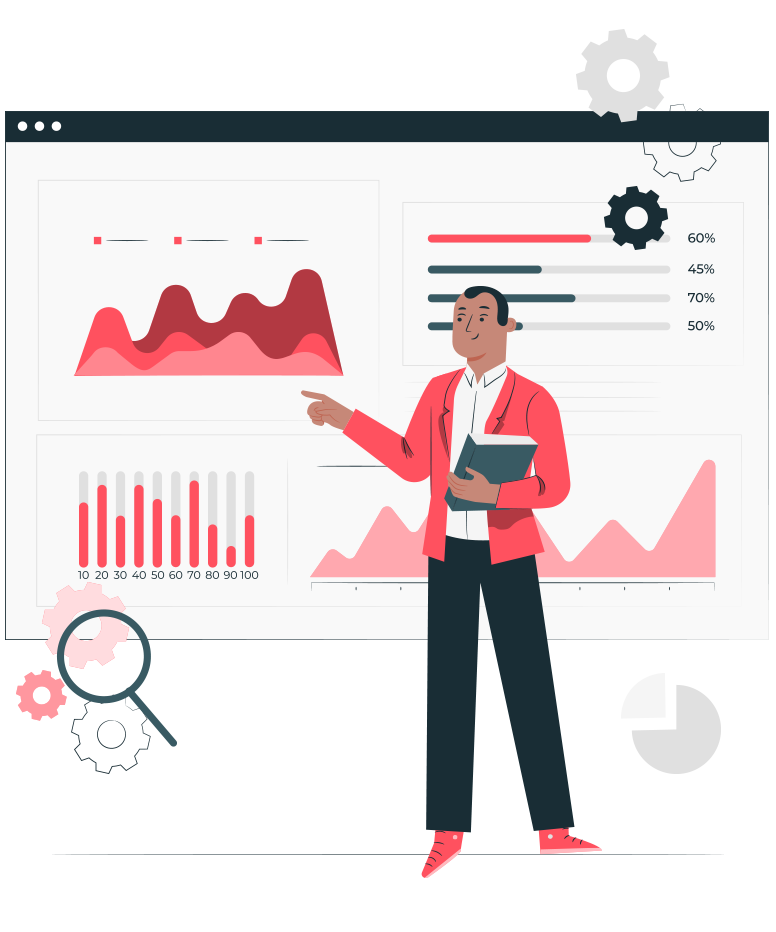Information Management is the science of safe, secure and organized retention of data, media and documents such that information contained therein is retrievable "online" or physically whenever and wherever needed. Platosys Technologies has gained an important role of IMS.
Also known as DWH is a system that is used for reporting and data analysis. It is considered to be the core of business intelligence (BI) as all the analytical sources revolve around the data warehouse.

Informatica
Informatica, is a well-established and reliable name in data warehousing these days . It holds a very good portfolio in data integration, ETL, B2B data integration, virtualization of data and information lifecycle management.
Informatica power center constitutes of three main components:
Client tools: Installed on developer machines.
Power Centre repository: A place to store metadata for an application.
Power center server: Server to perform data executions.
With a growing customer base, We use Informatica, which is continuously trying to leverage its data integration solutions. This tool has inbuilt powerful mapping templates to help in managing data in an efficient manner.
Cognos
Cognos is IBM's business intelligence (BI) and performance management software suite. The software is designed to enable business users without technical knowledge to extract corporate data, analyze it and assemble reports.
Reporting is one of the most important part of performance management process. As well as analysis, it guides to identifying three vital, business intelligence questions and, then, finding the answers to them.
Teradata
Teradata is one of the market leader when it comes to database services and products. .We use Teradata DWH for insights, analytics & decision making. Teradata DWH is a relational database management system marketed by Teradata organization. It has two divisions i.e. data analytics & marketing applications. We works on the concept of parallel processing and allows users to analyze data in a simple yet efficient manner. An interesting feature of this data warehouse is its data segregation into hot & cold data. Here cold data refers to less frequently used data and this is the tool in the market these days.
ETL Process in Data Warehouses
Extraction In this step, data is extracted from the source system into the staging area. Transformations if any are done in staging area so that performance of source system in not degraded. Also, if corrupted data is copied directly from the source into Data warehouse database, rollback will be a challenge. Staging area gives an opportunity to validate extracted data before it moves into the Data warehouse.
Data warehouse needs to integrate systems that have different DBMS, Hardware, Operating Systems and Communication Protocols. Sources could include legacy applications like Mainframes, customized applications, Point of contact devices like ATM, Call switches, text files, spreadsheets, ERP, data from vendors, partners amongst others. Hence one needs a logical data map before data is extracted and loaded physically. This data map describes the relationship between sources and target data.
Qlik View
QlikView has patented technology, which enables it to have many features that are useful in creating advanced reports from multiple data sources quickly. Following is a list of features that makes QlikView very unique.
Data Association is maintained automatically − QlikView automatically recognizes the relationship between each piece of data that is present in a dataset. Users need not preconfigure the relationship between different data entities.
Data is held in memory for multiple users, for a super-fast user experience − The structure, data and calculations of a report are all held in the memory (RAM) of the server.
Aggregations are calculated on the fly as needed − As the data is held in memory, calculations are done on the fly. No need of storing pre-calculated aggregate values.
Data is compressed to 10% of its original size − QlikView heavily uses data dictionary. Only essential bits of data in memory is required for any analysis. Hence, it compresses the original data to a very small size.
Visual relationship using colors − The relationship between data is not shown by arrow or lines but by colors. Selecting a piece of data gives specific colors to the related data and another color to unrelated data.
Direct and Indirect searches − Instead of giving the direct value a user is looking for, they can input some related data and get the exact result because of the data association. Of course, they can also search for a value directly.
Qlik Sense
Qlik Sense is a business intelligence (BI) and visual analytics platform that supports a range of analytic use cases. Built on Qlik’s unique Associative Engine, it supports a full range of users and use-cases across the life-cycle from data to insight – with self-service analytics, interactive dashboards, conversational analytics, custom and embedded analytics, mobile analytics, and reporting. The solution comes in three different editions - Qlik Sense Enterprise, Business, and Team. Qlik Sense can be deployed in the cloud or on-premises.
Quickly combine your data to create rich, interactive visual analytics in our secure cloud environment leveraging Qlik’s powerful Associative Engine.
Easily associate multiple data sources
Drag-and-drop your data to create fully interactive analytics apps
Get AI-generated insight suggestions, automatically
Share and co-author with your group or team in a governable environment
Schedule automated data refreshes
